Jefferson Burdick Collection at The Met in New York
By Michael Osacky for Kovels.com
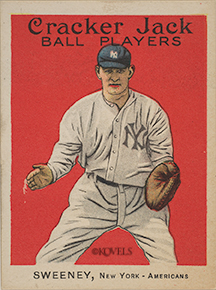
For those who do not know, Burdick is known as the “founding father” of baseball cards. Burdick saw the pieces of cardboard as historic artifacts and not for investment purposes. He developed arthritis in his early 30s which limited his ability to perform everyday tasks. In 1947, Burdick informed The Met that he intended to donate every card and piece of memorabilia that he owned. Over the course of 15 years, from 1948 to 1963, Burdick visited the museum and painstakingly glued each card into albums and inventoried the entire collection. Burdick pasted the final card from his collection into an album at The Met on January 10, 1963. The next day he checked himself into a hospital and passed away in March 1963.
I walked the exhibit with the curator of the exhibit, Allison Rudnick. “The joy in seeing people look at the exhibit organized around a specific theme, N.Y. baseball, is very special,” Rudnick confided in me.
There are different years, issues, and players represented in the collection on display. The first cards that jumped out to me are the Cracker Jack baseball cards. Cracker Jacks were only printed in 1914 and 1915. One card was inserted into each package of the caramel coated popcorn. The oldest and largest cards on display are the 1888 Allen & Ginter baseball cards. These cardboard relics are just as vibrant today as in 1888.
Many card collectors think the idea of bubble gum being inserted into packs of baseball cards originated from Topps in the early 1950s. Goudey Gum Company in Boston was the first to pair gum with baseball cards in 1933. There are numerous Goudey gum cards on display. The set is littered with hall of famers, including Babe Ruth. Ruth has four different cards in the set. Card #53 has a yellow background and is the most difficult to find. Rudnick did a great job of doing research and choosing exactly which cards to display for maximum impact.
A few passersby in the exhibit were very familiar with early 1950s Topps and Bowman card issues. These men remember going to the five and dime stores in the 1950s and buying the same cards that are on display. One of the men told me, “This collection reminds me of my childhood. It was so great and much more simple back then.”
This high quality exhibit is just one of the many exhibits at The Met. If you are in the New York area, stop by and see the cards yourself. Seeing the cards in person will leave you with a smile on your face and memories of yesteryear.
The Burdick exhibit titled “The Old Ball Game: NY Baseball 1887-1977” is on display in New York through November 13, 2016. For more information, go to http://www.metmuseum.org/press/exhibitions/2016/the-old-ball-game.
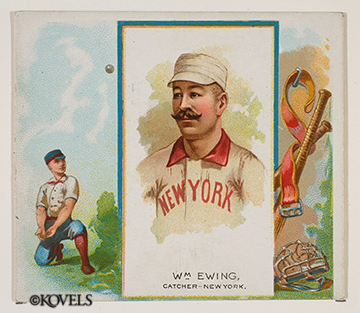 |
|
Photos are courtesy of the Metropolitan Museum of Art in New York |
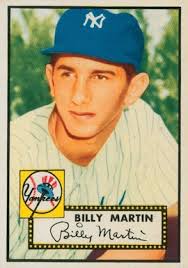 Trimming a card is the same thing as altering it. The value is essentially nill. Collectors do NOT want a trimmed card under any circumstance. The best investment I have ever made was to buy a ten cent ruler at Target. I know the dimensions for every baseball, football, and basketball card. If I believe a card to be trimmed, I simply take a measurement to determine.
Trimming a card is the same thing as altering it. The value is essentially nill. Collectors do NOT want a trimmed card under any circumstance. The best investment I have ever made was to buy a ten cent ruler at Target. I know the dimensions for every baseball, football, and basketball card. If I believe a card to be trimmed, I simply take a measurement to determine.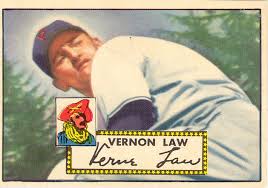
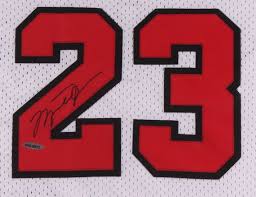 As I travel across the country visiting with individuals and appraising collections, there’s always something different and unique that catches my eye. Recently, after I appeared on a radio show, I received a phone call from a woman who lived very close to where I grew up and attended high school. Her uncle was a former Chicago Bulls player during the ’90s and had received six of the championship rings that come with winning an NBA championship. The family wanted to know how much each item was valued at.
As I travel across the country visiting with individuals and appraising collections, there’s always something different and unique that catches my eye. Recently, after I appeared on a radio show, I received a phone call from a woman who lived very close to where I grew up and attended high school. Her uncle was a former Chicago Bulls player during the ’90s and had received six of the championship rings that come with winning an NBA championship. The family wanted to know how much each item was valued at.
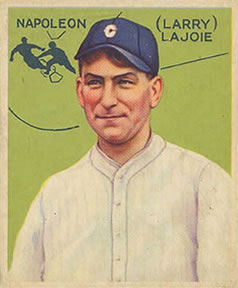 The 1933 Goudey Baseball Card Set is widely considered by vintage baseball card enthusiasts as one of the top collecting card sets in the history of card collecting. Additionally, it was the first American card set to pair bubble gum with baseball cards.
The 1933 Goudey Baseball Card Set is widely considered by vintage baseball card enthusiasts as one of the top collecting card sets in the history of card collecting. Additionally, it was the first American card set to pair bubble gum with baseball cards.